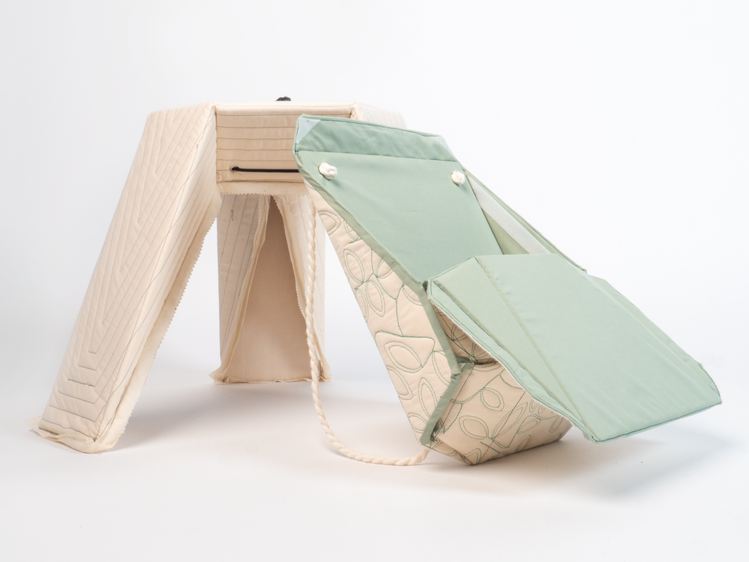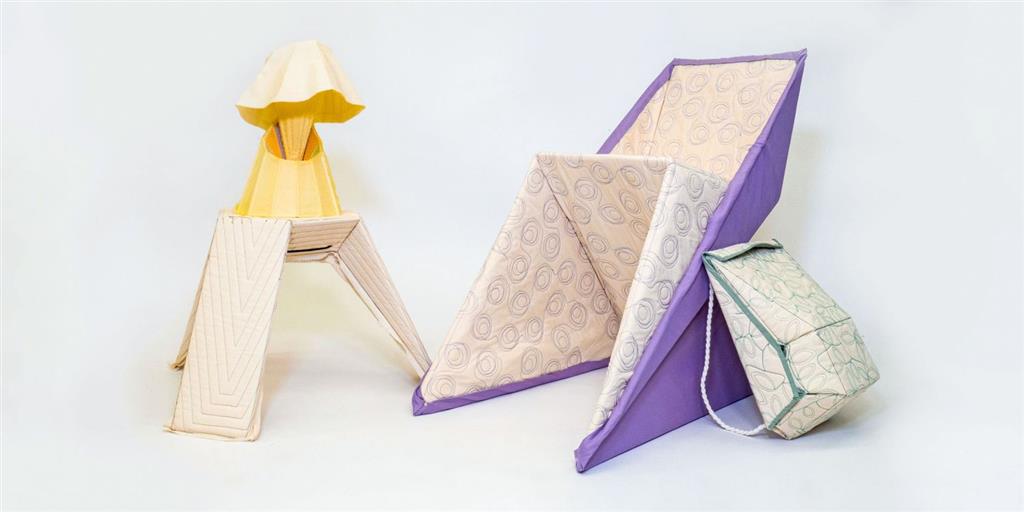
For those navigating frequent relocations or living in compact spaces, furniture that is both portable and functional can be a game changer. Addressing this need, a group of researchers at Carnegie Mellon University has developed a groundbreaking technique that combines robotics, quilting and material science to create foldable home furnishings. This innovation uses fabric-covered panels with integrated hinges, allowing flat-packed items to unfold into robust, usable furniture, all without the need for traditional hardware like metal hinges or screws. Know more about this project on FURNITURE DESIGN AND TECHNOLOGY (FDT) as it proves that with the right combination of digital fabrication and material innovation, furniture design can evolve to become more adaptable, sustainable and accessible.

The team behind this innovative approach includes Sapna Tayal, Lea Albaugh, Mark Stehlik, James McCann and Scott E Hudson. Together, they explored how CNC long-arm quilting machines, typically used for making quilts, can be repurposed to create three-dimensional, fabric-stitched furniture. Their work resulted in a collection of lightweight and flexible household objects such as a lounge chair, side table, lamp and even a backpack.
At the heart of this system is the use of a CNC (computer numerical control) long-arm quilting machine, capable of sewing large sections of fabric with high precision. The team worked with a model that has a 32inch reach and spans 13ft in length, giving them a broad working area to stitch together intricate layers. This machine follows vector paths imported through design software, enabling the creation of complex geometric patterns and fold lines inspired by origami.

Each furniture item is made by sandwiching rigid materials such as plywood or acrylic between layers of fabric. The quilting machine stitches through these layers, leaving gaps between the inserts to form flexible fabric-based hinges. These hinges allow the finished object to be folded flat for transport or storage and then expanded into a sturdy, three-dimensional shape when needed.
Customization is a key feature of this technique. Different types of fabric and panel materials are chosen based on the specific functional requirements of each item. For instance, the lamp uses sheer fabric to allow light to diffuse through the surface, while the lounge chair employs thicker plywood inserts for strength and support. To enhance stability and usability, components like tendon cords, magnets and hook-and-loop fasteners are strategically integrated into the design.

Each piece developed under this project has its own unique functionality. The side table, for example, includes a tendon cord system threaded through the inner struts. When pulled, this cord compresses the structure, helping it lock into a stable form. The backpack, inspired by packaging principles, also uses tendon cords that double as shoulder straps and structural elements during transformation. Hook-and-loop fasteners ensure the pack stays closed and secure.
Another standout is the table lamp, adapted from a 3D-printable design known as Lang’s Elliptic Infinity lamp. The team reconstructed it using acrylic panels and integrated LED lighting, showcasing how this method can be applied to both functional and aesthetic elements. Meanwhile, the lounge chair, designed to support the weight of an adult, includes embedded neodymium magnets for panel alignment and uses heavier wood materials for added durability.

Developing these prototypes required meticulous material planning, precision quilting and experimentation with different fabric properties to ensure strength, flexibility and longevity. The implications of this technique are wide-ranging, from customizable, portable furniture for urban dwellers to flat-packed relief solutions in disaster zones.
Image credit: Sapna Tayal
Furniture Design India and the magazine FURNITURE DESIGN & TECHNOLOGY (FDT magazine) are from the trusted 22-year-old media house of SURFACES REPORTER and PLY REPORTER.
FDT is a B2B monthly bilingual magazine from India that shares the pulse of the furniture business in India and connects the manufacturers, OEMS, product designers, architects, showrooms, designers and dealers.
Read More© 2025 Furniture Design and Technologies.. All Rights Reserved. Developed by eyeQ Advertising